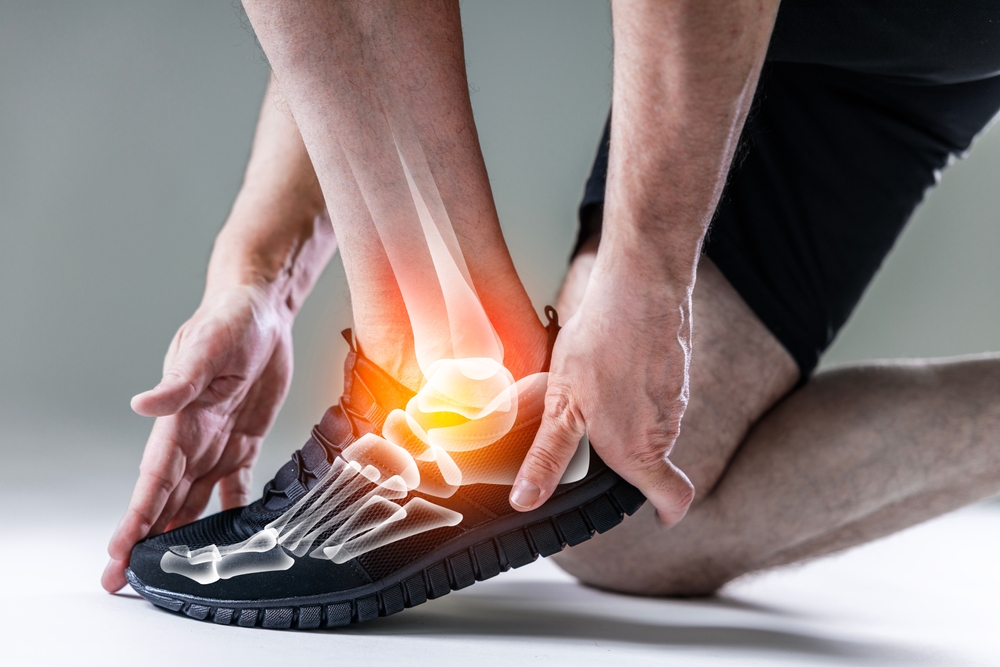Read more about effective treatment options for sciatic pain
Sciatic pain is commonly discussed as discomfort caused by pressure or irritation along the sciatic nerve. This overview explains general approaches often mentioned for easing symptoms, including posture correction, guided exercise, and professional evaluation. Read more about effective treatment options for sciatic pain.

Sciatic nerve discomfort affects millions of people each year, causing pain that radiates from the lower back down through the leg. This condition can range from mild tingling to severe, debilitating pain that interferes with work, exercise, and everyday activities. The sciatic nerve is the longest nerve in the body, and when it becomes compressed or irritated, the resulting symptoms can be both frustrating and limiting. Learning about the underlying factors and available management options is an important step toward finding relief.
What is sciatic pain and how does it affect daily movement?
Sciatic pain refers to discomfort that follows the path of the sciatic nerve, typically affecting one side of the body. The sensation can manifest as sharp, shooting pain, burning, tingling, or numbness that travels from the lower back through the buttock and down the leg, sometimes reaching the foot. This condition can make sitting for extended periods particularly uncomfortable, as pressure on the nerve increases when seated. Standing up from a seated position, climbing stairs, or bending forward may also trigger or worsen symptoms. Many people find that certain positions provide temporary relief, while others exacerbate the discomfort. The impact on daily movement can be significant, affecting work productivity, sleep quality, and the ability to participate in physical activities or hobbies.
What are commonly discussed causes and contributing factors?
Several factors can contribute to sciatic nerve discomfort. A herniated or bulging disc in the lower spine is one of the most frequently discussed causes, as the disc material can press against the nerve root. Spinal stenosis, a narrowing of the spinal canal, can also create pressure on the nerve. Degenerative disc disease, which occurs naturally with aging, may lead to changes in the spine that affect the sciatic nerve. Piriformis syndrome, a condition where the piriformis muscle in the buttock irritates the nerve, is another potential contributor. Additional factors include spinal injuries, tumors, or bone spurs that compress the nerve. Lifestyle factors such as prolonged sitting, excess body weight, and occupations requiring heavy lifting or repetitive twisting motions may increase the risk of developing sciatic discomfort. Pregnancy can also place additional pressure on the sciatic nerve due to changes in posture and increased weight.
How can lifestyle and posture adjustments help manage symptoms?
Making specific lifestyle and posture modifications can play a meaningful role in managing sciatic nerve discomfort. Maintaining proper posture while sitting is essential; using a chair with good lumbar support and keeping feet flat on the floor can reduce pressure on the lower back. Taking regular breaks to stand and stretch during prolonged sitting periods helps prevent stiffness and compression. When lifting objects, using proper technique by bending at the knees rather than the waist protects the lower back. Sleeping position also matters; many people find relief by sleeping on their side with a pillow between the knees, which helps maintain spinal alignment. Regular low-impact physical activity such as walking, swimming, or gentle stretching can strengthen supporting muscles and improve flexibility. Maintaining a healthy body weight reduces stress on the spine and sciatic nerve. Avoiding prolonged standing or sitting in one position, wearing supportive footwear, and using ergonomic furniture at work are additional adjustments that may provide benefit.
When should you seek professional guidance and medical evaluation?
While some cases of sciatic discomfort resolve on their own with self-care measures, certain situations warrant professional medical evaluation. If pain is severe and does not improve after a few weeks of home care, consulting a healthcare provider is advisable. Sudden onset of severe pain following an injury, such as a fall or accident, requires prompt medical attention. Progressive weakness in the leg, difficulty controlling bladder or bowel function, or numbness in the groin area are red flags that need immediate evaluation, as they may indicate a serious condition requiring urgent treatment. Healthcare professionals can perform a thorough examination, which may include physical tests to assess nerve function, range of motion, and reflexes. Imaging studies such as X-rays, MRI, or CT scans may be recommended to identify the underlying cause. Based on the evaluation, healthcare providers can discuss various management approaches, which may include physical therapy, medications for pain and inflammation, epidural steroid injections, or in some cases, surgical intervention. A comprehensive evaluation ensures that the treatment plan addresses the specific cause and severity of the condition.
What preventive measures support long-term sciatic health?
Preventing sciatic nerve discomfort involves adopting habits that protect spinal health over the long term. Regular exercise that strengthens the core muscles, including the abdominals and lower back, provides better support for the spine and reduces the risk of injury. Flexibility exercises and stretching routines help maintain range of motion and prevent muscle tightness that can contribute to nerve compression. Practicing proper body mechanics during daily activities, such as lifting, bending, and reaching, protects the spine from unnecessary stress. Maintaining good posture throughout the day, whether sitting, standing, or walking, keeps the spine in proper alignment. Avoiding prolonged periods in any one position by taking movement breaks helps prevent stiffness and pressure buildup. Managing body weight through balanced nutrition and regular physical activity reduces the load on the spine. Avoiding smoking is also important, as it can impair blood flow to spinal discs and accelerate degeneration. Creating an ergonomic workspace with proper chair height, monitor placement, and keyboard positioning can prevent strain during work hours. Staying hydrated supports disc health, as spinal discs rely on adequate fluid to maintain their cushioning function. By incorporating these preventive strategies into daily routines, individuals can support their spinal health and reduce the likelihood of developing sciatic nerve discomfort in the future.
Understanding sciatic pain and the various factors that contribute to it empowers individuals to make informed decisions about their health. From recognizing early symptoms and making lifestyle adjustments to seeking appropriate professional guidance when needed, there are multiple pathways to managing this condition. While the experience of sciatic discomfort varies from person to person, a proactive approach that combines self-care with professional support often yields the most favorable outcomes. By prioritizing spinal health through preventive measures and addressing symptoms early, many people can minimize the impact of sciatic pain on their daily lives and maintain their mobility and comfort over time.
This article is for informational purposes only and should not be considered medical advice. Please consult a qualified healthcare professional for personalized guidance and treatment.




